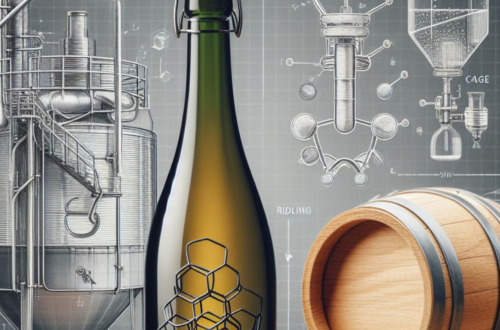
What does St Laurent wine taste like?
Austria permits 26 types of white grapes and 14 types of red grapes for the production of Qualitätswein, Prädikatswein, and Landwein.
In the last two decades, the proportion of red wines has doubled and currently represents a third of Austria’s almost 46,500 hectares vineyard area.
Not only has Austria globally renowned grape varieties like Riesling, Pinot Blanc, Chardonnay, Muscat Blanc à Petit Grains, Traminer, Pinot Noir, Merlot, Cabernet Sauvignon, and Syrah, it also has a large palette palette of native varieties.
This list is even more extensive, with Grüner Veltliner dominating almost a third of the vineyard area, the other being Neuburger, Rotgipfler, Zierfandler, Roter Veltliner, Zweigelt, Blaufränkisch, Saint Laurent, and Blauer Wildbacher.
St Laurent grape characteristics
Saint Laurent is a red grape variety that is grown in several countries, including Austria. In Austria, the oldest vines of Saint Laurent can be found in Tattendorf, dating back to the 1950s.
Saint Laurent grows best in poor, cool, stony, and well-drained soils that restrain its natural vigour. Its compact bunches make it sensitive to rot, which is why good drainage is essential.
Despite the challenges, Saint Laurent retains good acidity, and winemakers need to be mindful of brettanomyces, a spoilage yeast that can thrive in wines with high pH levels.
What does a St Laurent wine taste like?
St. Laurent wines are known for their intriguing and delicious flavors, with silky textures and soft tannins.
The wine is intensely aromatic, with a bouquet of roses, violets, cherries, raspberry, cardamom, tar, sweet cigar tobacco, graphite, and bramble.
In terms of taste, it presents flavors of Morello cherry, raspberries, anise, leather, and clay with a balanced mouthfeel. The wine ends with lush dark fruit and a structured, yet silky length.
St. Laurent is a grape that can bring pepperiness, but its best examples attain beautiful complexity when aged.
It is mainly grown in Thermenregion and Northern Burgenland.
History of Saint-Laurent wine
The grape variety has an interesting history, as it was once thought to be related to the village of Saint-Laurent in Médoc, but it is now believed to be connected to the Burgundy region. There is however no relation between Saint-Laurent and Pinot Noir.
Actually, the grape variety was disseminated by Stift Klosterneuburg Abbey.
The name Saint Laurent is derived from the birthdate of Saint Laurentius “Lorenzitag”, which was on August 10th, when the grape often begins to ripen.
Best Austrian Saint Laurent and pairings
St. Laurent is an indigenous grape variety that is predominantly grown in the Thermenregion and Northern Burgenland regions of Austria.
In the Carnuntum region, Philippe Grassl is known for producing top red wines, with the St. Laurent Alte Reben being a standout, thanks to its 1961 vines and exceptional 2015 vintage.
Meanwhile, Georg Stiegelmar, a pioneer of Strohwein in the Neusiedlersee region, has produced several gear changes in his winery since 1995. Although his white wines are not noteworthy, the St. Laurent Reserve is consistently charming, and his famous “St. Georg” wine, a blend of St. Laurent and Pinot Noir, offers structure, ample acidity, and spice on the finish.
In Mittelburgenland, Gesellmann’s “Hochäcker” is a delicious and reliable wine with cherry, blueberry, and marzipan aromas. Gesellmann’s Opus Eximium is also worth trying, as it is a blend of Blaufränkisch, Zweigelt, and St. Laurent aged for 18 months in old barriques.
Finally, Falstaff recommends several wineries for their St. Laurent wines, including Pittnauer and Umathum in Burgenland and Johanneshof Reinisch in the Thermenregion.
For the pairings, check out my post on “What to eat with Saint-Laurent wine?”
St Laurent in the world
Saint-Laurent wines are produced in various regions worldwide, with some of the best examples coming from Germany, Slovakia, California (USA), and the Czech Republic.
Germany‘s Anselmann Edesheimer Ordensgut Trocken, Kuntz Sankt Laurent Trocken, Winzergenossenschaft Herxheim Herxheimer Honigsack Trocken, and Thomas Hensel Aufwind Trocken in Pfalz offer top-notch Saint-Laurent wines.
In Slovakia, Masaryk, LVD Limbach in the Small Carpathian wine region, and Skovajsa in South Slovak produce noteworthy Saint-Laurent wines.
California‘s Scribe St. Laurent, Carneros, Cruse Wine Co. Sparkling Petillant Naturel, Carneros, and Forlorn Hope ‘Ost-Intrigen’ Ricci Vineyard Carneros are worth trying.
Finally, in the Czech Republic, Z Czech in Moravia and Habanske Sklepy Svatovavrinecke are highly regarded Saint-Laurent wine producers.
Conclusion : What does St Laurent wine taste like?
St. Laurent wines are appreciated for their delicious and complex flavors, silky texture, and soft tannins. They have a floral and fruity aroma with notes of roses, violets, cherries, raspberry, cardamom, and tobacco.
The wine has a balanced taste of Morello cherry, anise, leather, and clay, and ends with a rich dark fruit flavor and a structured, yet smooth finish. St. Laurent wines can age well and attain beautiful complexity.







